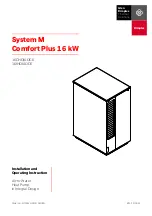
HIGH PRESSURE SPRAY CAN CAUSE SERIOUS INJURY.
FOR
PROFESSIONAL USE ONLY. OBSERVE ALL
WARNINGS. Read and understand
all
instruction manuals before operating equipment.
FLUID INJECTION
HAZARD
g neretes very high fluid pressure. Spray from
the gun, leaks or ruptured components can inject fluid
through your skin and into your body and cause extremely
fluid injected or splashed into the eyes or onto the
skin
can
serious bodily injury, including the need for amputation. Also,
cause serious damage.
any part of the body. NEVER put hand or fingers
the
NEVER point the spray gunldispensing valve at anyone or at
spray tiplnozzle. NEVER try to "blow
paint; this is NOT
an air spray system.
ALWAYS have
tip
guard in place on the spray gun when
spraying.
ALWAYS follow the Pressure Relief Procedure,
vicing any system equipment.
right, before cleaning or removing the spray
or
NEVER try to stop or deflect leaks with your hand or body.
before each use.
Be sure the equipment safety devices are operating properly
Note
to
Ph
sician: In e tio
'n
the skin is a traumatic injury,
to
soon
as
ble. Do not delav treatment to research toxicitv. Toxicitv is a
concern with some exotic coatings injected
into the
blood stream. Consulatation with a plastic surgeon or
reconstructive hand surgeon may be advisable.
Safety
Latch
Whenever you stop spraying, even for
a
moment, always set
the gunldispensing valve safety latch in the closed or "safe"
position, making the gunldispensing valve inoperative. Failure
to set the safety latch can result in accidental triggering of the
gunldispensing valve.
Diffuser
on
spray
The gun diffuser breaks up spray and reduces the risk of fluid
injection when the tip is not installed. Check the diffuser
operation regularly. Follow the
Pressure
Relief Procedure,
to
the right, then remove the spray tip. Aim the gun into a
grounded metal pail, holding the gun firmly to the pail. Using
is not diffused into an irregular
replace the diffuser
the
possible pressure, trigger the gun. If the fluid
immediately.
Tip
Guard
on
spray
ALWAYS have the tip guard
in
place
on
the spray gun while
spraying. The tip guard
you to the injection hazard and
helps reduce, but does not prevent, accidentally placing your
fingers or any part
of
your body close to the spray tip.
Trigger Guard
guard removed. This guard reduces the risk of the gunldis-
NEVER operate the gunldispensing valve with the trigger
pensing valve triggering accidentally if it is dropped or
bumped.
cleaning or changing spray
tipslnozzles. If the spray
clogs while
pensing, engage the gunldispensing valve safety latch im-
mediately. ALWAYS follow the Pressure Relief Procedure
and then remove the spray tiplnozzle to clean it.
pressure is fully relieved and the gun or dispensing valve safety
NEVER wipe
off
build-up around the spray tiplnozzle until
latch is engaged.
reduce
of
injury, including injection,
splashing in the eyes, or injury from moving parts, always
follow this procedure whenever you shut
off
the pump, when
checking or servicing any
the sprayldispensing system,
when installing, cleaning or changing spray tipslnozzles. and
whenever you stop sprayingldispensing.
2. Shut
off
the air to the pump.
Engage the gunldispensing valve safety latch.
3.
Close the bleed-type master air valve (required in your
4.
Disengage the safety latch.
5.
Hold
a
metal part of the gunldispensing valve firmly to the
side of
a
grounded metal pail, and trigger the
ing valve to relieve pressure.
f
,
system).
7.
Open the drain valve
the pump bleeder valve
6.
Engage the gunldispensing valve safety latch.
quired in your systeml, having
a
container ready to catch
the drainage.
8.
Leave the drain valve open until you are ready to
sprayldispense again.
If
you
that the spray
or
hose
is
completely
clogged,
or
pressure has
nor
been fully relieved after
following the steps above, VERY SLOWLY loosen the
then loosen completely. Now clear the tiplnozzie or hose.
ing nut or hose end coupling and relieve pressure gradually.
EQUIPMENT MISUSE
HAZARD
General Safe
exceed the recommended working pressure or the
S
stem Pressure
cessories, such as overpressurizing. modifying parts, using in-
compatible solvents and fluids, or using worn or damaged
maximum air
pressure stated on your pump or in the
parts, can cause them to rupture and result in injection or
TECHNICAL DATA on pages
other serious bodily injury, fire, explosion or property damage.
Be sure that all sprayldispensing equipment and accessories
NEVER
or modify any part of this equipment; doing
so
are rated to withstand the maximum working pressure of the
could cause
it
to malfunction.
pump. DO NOT exceed the maximum working pressure of any
component or accessory used in the system.
CHECK all sprayldispensing equipment regularly and repair or
replace worn or damaged parts immediately. Read and follow
Fluid
BE
SU
E t tell
and solvents used are chemically
the fluid and solvent manufacturer's literature regarding the
patible with the wetted parts shown in the TECHNICAL DATA
use of protective clothing and equipment.
on pages 1820. Always read the manufacturer's literature
307-605
before using
fluid
or solvent
in
this pump.
. .
. .




































